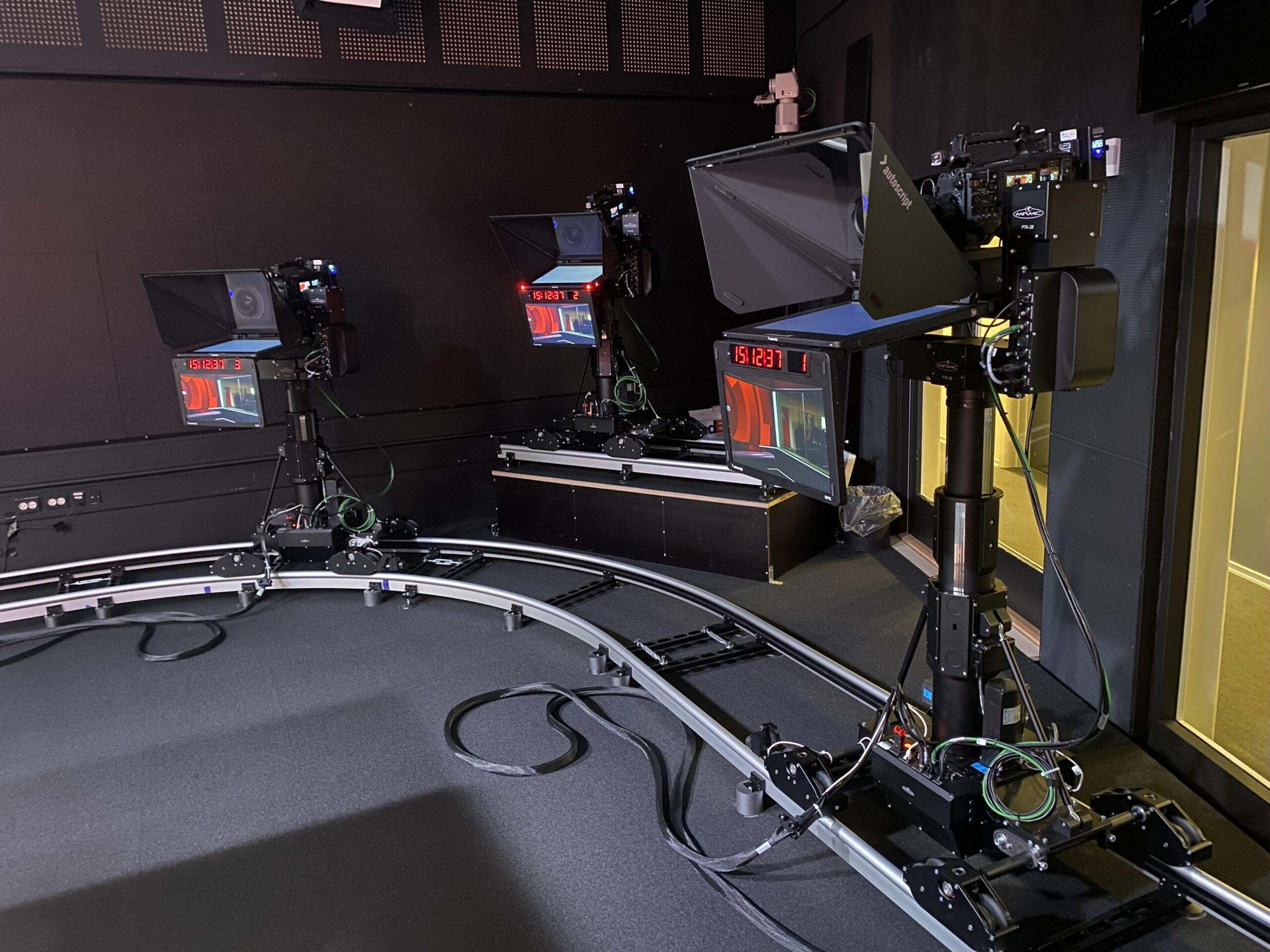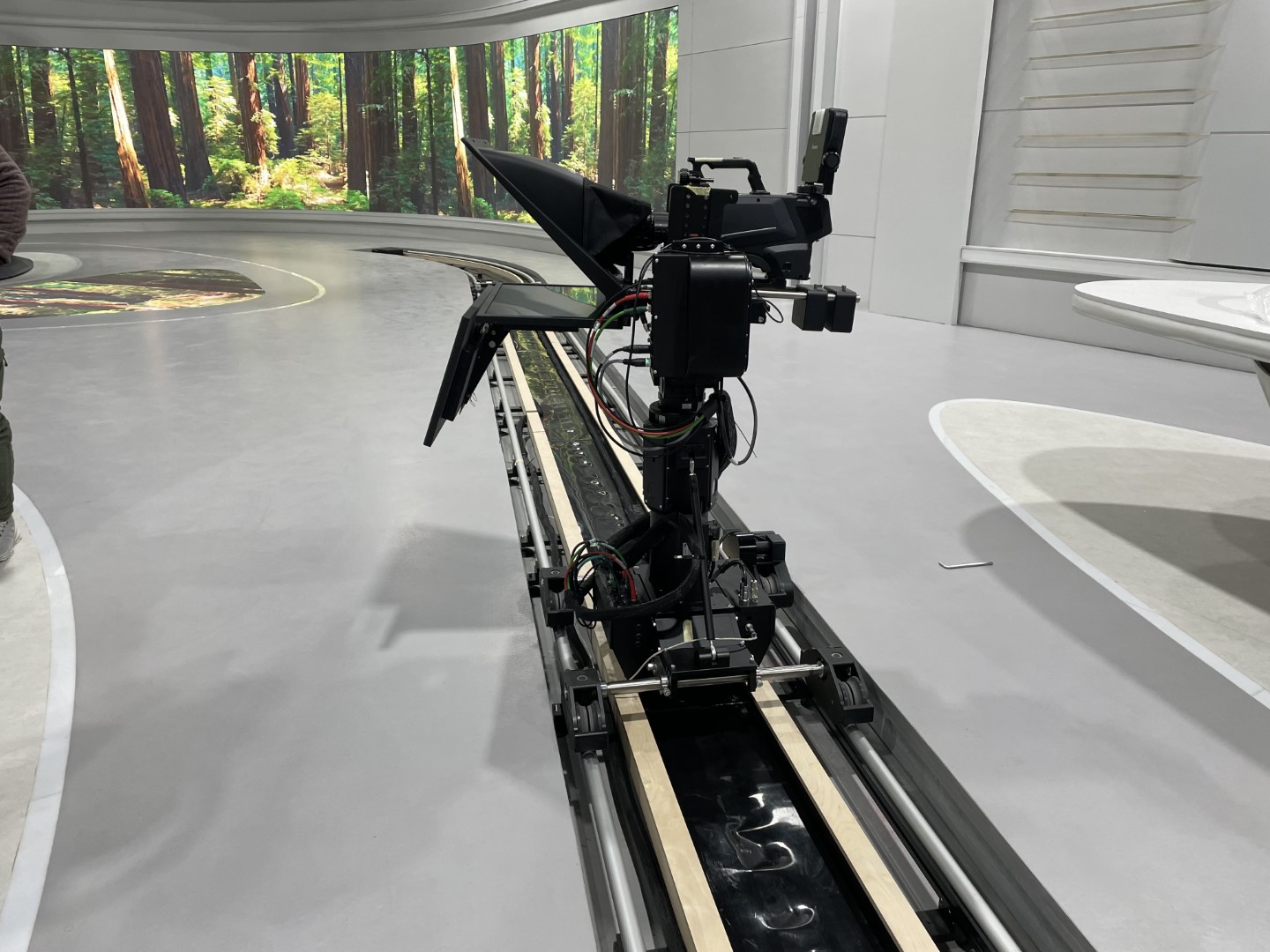Bringing VR Integration to Curved Rail Systems
MRMC’s X-Y tracking system for curved rail configurations represents a significant advancement in studio robotics: a technology designed not only to solve technical challenges, but to unlock new levels of creativity within confined production spaces. Developed as a cost-effective, self-contained alternative to third-party tracking systems, it delivers the precision and spatial awareness required for seamless integration between physical and virtual environments, while giving directors and operators far greater freedom to design dynamic, cinematic camera movement.
MRMC’s X-Y tracking system for curved rail configurations represents a significant advancement in studio robotics: a technology designed not only to solve technical challenges, but to unlock new levels of creativity within confined production spaces. Developed as a cost-effective, self-contained alternative to third-party tracking systems, it delivers the precision and spatial awareness required for seamless integration between physical and virtual environments, while giving directors and operators far greater freedom to design dynamic, cinematic camera movement.
Expanding Creative Possibilities in Limited Spaces
For decades, track-based robotic heads were restricted to linear motion, inherently limiting camera choreography and visual storytelling within smaller studios. Over the past 12 months, MRMC has been working with several customers to help address a specific pain point – the ability to capture dynamic angles in spaces where agility, precision and high payload are required. The outcome combines MRMC’s R&D and advanced engineering with a curved track system that natively integrates with VR workflows. The technology we have developed allows broadcasters to dispense with third-party tracking, dramatically reducing system cost while providing sweeping moves, smooth transitions, and subtle parallax effects.
Intelligent Design for Modern Studio Realities
While MRMC’s Studiobot range offers industry-leading cinematic motion, the TRH Track Robotic Head (lift column on track) is designed for scenarios where space and mobility are paramount. Supporting substantial payloads while maintaining a low profile, the TRH system provides smooth, cinematic motion within compact or geometrically complex studios. This approach gives directors the aesthetic freedom of multi-angle coverage without the physical footprint or safety considerations of larger robotic arms.
Versatile Application: From Large S-Curves to Tight Corners
In a recent installation for Ardh Alsama, MRMC partnered with Mawja Tech to deliver a studio environment capable of advanced AR and VR workflows. Using the TRH Track Robotic Head with the PTA-2 broadcast camera platform on an S-shaped rail, the system produces fluid, sweeping camera motion that enhances the sense of spatial realism within the virtual environment. The precision of the MRMC robotic system ensures parallax, depth, and motion remain perfectly consistent, giving directors the creative latitude to design shots that feel natural and cinematic.
MRMC also continues its close partnership with Danmon Group to deliver a successful project this time in Denmark for TV2 Fyn. The TRH with PTA-2 robotic head system is mounted on a corner curved rail that enables the TV2 Fyn to achieve multiple distinct shots, from a wide establishing frame to a tight presenter angle, all within a single, continuous move. This not only replaces the need for multiple camera positions but also elevates the creative quality of on-air presentation. The system ensures every frame remains synchronised with the graphics engine, preserving depth and perspective as the camera transitions between angles. The result is a fluid, cinematic experience that transforms a small studio into a visually expansive broadcast environment.


Creativity Through Engineering Precision
When MRMC R&D team developed the curved track solution, it perfectly demonstrated how engineering innovation can directly enhance creative output. Each installation proves that advanced robotic motion no longer requires large footprints or complex third-party tracking systems, it only requires intelligent design.

